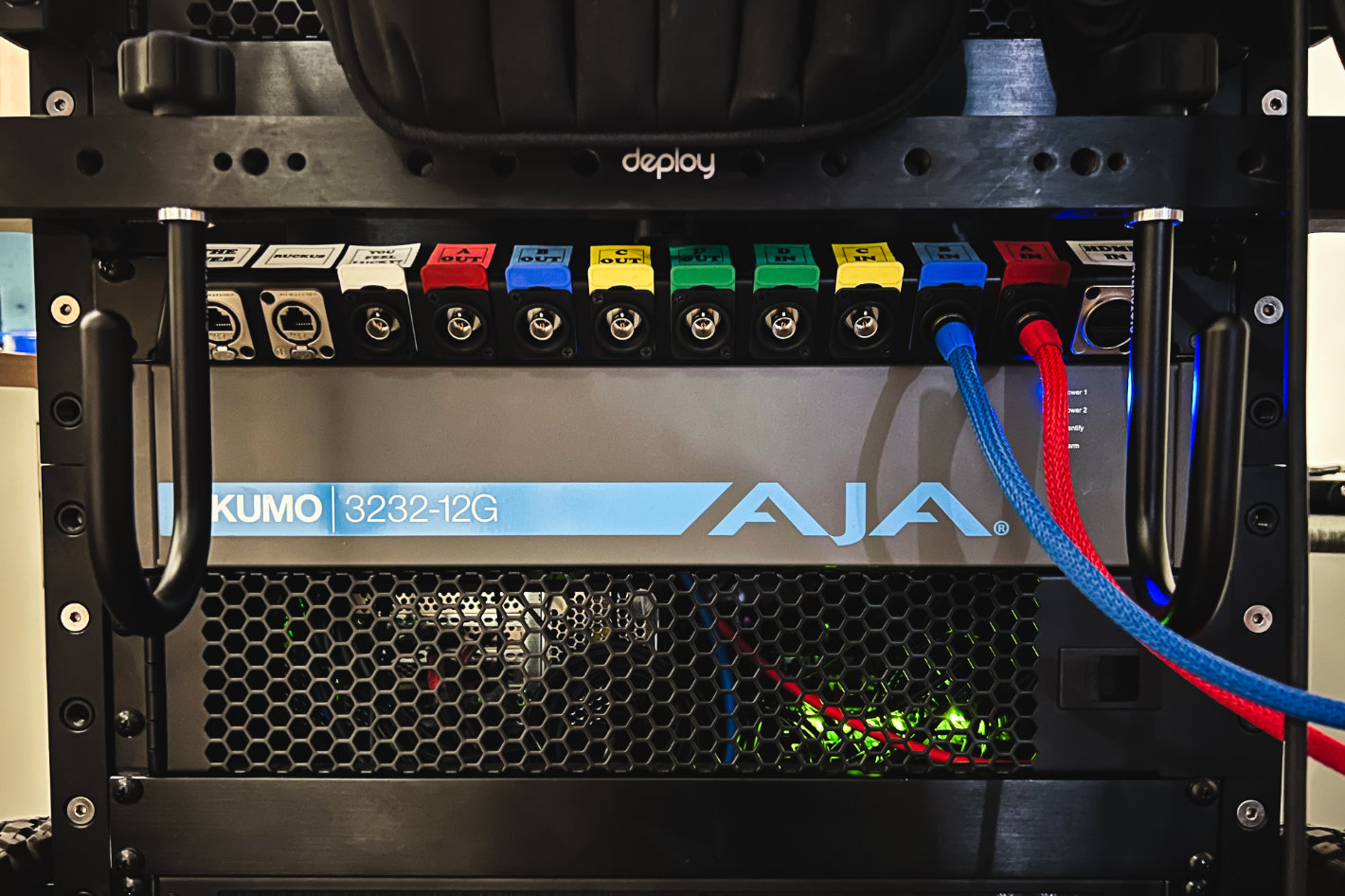
A liaison between production and post on set, digital imaging technicians (DITs) are the go-to resource for troubleshooting everything from imaging sensors to hard drives, signal paths, and monitors. Doing this while ensuring the director of photography’s (DP) vision is accurately translated to the various production departments puts quite a bit of pressure on the role.
DIT Kevin Shiramizu is an experienced professional and knows having the right kit in his DIT cart carts goes a long way in keeping everything running smoothly. His setup provides the flexibility and reliability needed to keep productions running smoothly. To help manage inevitable curve balls, he’s integrated an AJA KUMO 3232-12G router and an assortment of AJA Mini-Converters into his cart. The future proof setup provides enough ins and outs, and bandwidth to support 4K HDR live grading and monitoring needs on set, and a way to move between equipment and display formats as needed.
The KUMO 3232-12G router offers increased capacity for medium sized configurations in a compact 2RU profile with support for 12G-SDI/6G-SDI/3G-SDI/1.5G-SDI from 32x 12G-SDI inputs and 32x 12G-SDI outputs. It supports ganged dual and quad port routing control, allowing users to group together multiple inputs and outputs for Dual Link, Quad Link 4K/UltraHD, and 8K/UltraHD2 workflows. The device supports large format resolutions, high frame rate (HFR) and deep color formats, while reducing cable counts when transporting 4K/UltraHD over SDI. It also offers network-based and/or physical control using KUMO CP and CP2, and a USB port for configuring IP addresses via AJA’s eMini-Setup software.
Working primarily in commercials, Shiramizu says that because his projects are shorter, he continually faces new challenges. “Whether I’m working with a different camera, trying to achieve a set look for the actors, or the project has a certain style, there’s a never-ending permutation of factors to make each shoot happen,” he explains. “It’s like trying to solve a trick Rubik’s Cube. As soon as I think I’ve got it, something changes, and I have to figure that out — like shooting against an LED wall.
“As productions get more complex and more people on set want access to live monitoring, having enough ins and outs is critical to keeping things moving, which is why I use KUMO. It gives me so much flexibility and reliability, and the fact that AJA and Pomfort make software integration seamless is awesome for live grading. With 32 ins and outs on the KUMO, I’m excited to move to Livegrade Studio in the future,” added Kevin. “While I mostly receive signals through a wireless video system via SDI into the router, if the wireless receiver is HDMI, I’ll use an AJA HDMI to SDI converter, which is great.”
Outside of conversion needs for transmitting the wireless signal between the video system and router, Shiramizu must also manage a host of other conversion demands on set, whether it’s monitoring an iPhone, a GoPro, Sony SLR cam, or other capture device. For this reason, he keeps a number of AJA Mini-Converters and distribution amplifiers on his cart. Shiramizu says, “Having a nice quiver of AJA Mini-Converters in my toolkit for those moments has saved the day countless times.”
He concludes, “Whether KUMO or a Mini-Converter, AJA gear is so reliable and makes me feel prepared for the future, especially as the industry begins shifting toward 4K HDR monitoring, and 12G-SDI becomes more widely adopted on set. I love being ahead of the curve, which is why I’m also looking at integrating AJA ColorBox into my cart for color space and HDR format conversions; I can’t wait to see what it might bring to my workflow.”
